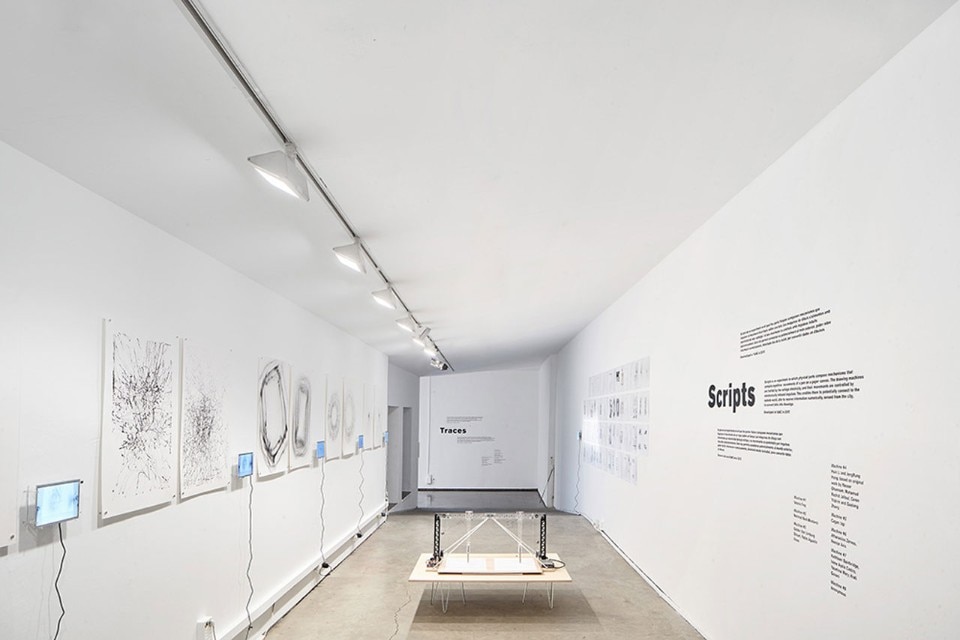On 29 June 2018, the Centre d’Art Santa Mònica, the 17th century ex-Renaissance convent in the lively Ramblas of Barcellona, converted into a centre for arts and contemporary culture, opened the exhibition “auto-màtic”. Directed by the Swiss-Belgian architect Edouard Cabay, founder of the experimental architecture studio Appareil, and professor at IAAC - the Institute for Advanced Architecture in Catalonia, “auto-màtic” has been set up as part of the research project “Machinic Protocols”, and aims to explore the potential - and limits - of generative design, offering a most fascinating examination of how automation is revolutionising the way that architects, designers, and creative figures in general, work.

Is it possible to produce creative processes that do not rely on human intellect? Cabay makes reference to the surrealist André Breton and to automatic writing, the artistic-literary practice which he created in 1924 to overcome the influence of reason and discover the creative force of the unconscious mind. However, in the case of “auto-màtic”, this concept expands further, and it is technology which is the protagonist of the creative process: this time, computers, robotic arms and the such interact with paper. It is no coincidence that the title of the exhibition pays tribute to the “Metá-matics” sculptures by the Swiss artist Jean Tinguely, who in the 1950s reflected on the widespread intrusion of technology in society - and therefore in art - questioning the role of the artist, works of art and viewers.

Who is the author of a drawing produced by machine and therefore devoid of that unmistakable element of authenticity and creativity which is inherent in “the hand of the artist”? According to Cabay, the answer can be one only: many. The more than 120 drawings on display at the Centre d’Art Santa Mònica are in fact the result of the collaboration of more than 80 people including information technologists, programmers, architects and designers. More than the mechanical act in itself, “auto-màtic” therefore refers to a methodology, an automated process in which the author-designer becomes a simple spectator.
The exhibition is built around three series entitles “Plots” (2018), “Scripts” (2017) and “Traces” (2016. In the first, the most recent, a protocol, or rather a set of instructions, is imparted through three different languages to just as many executors: to a computer via an algorithm, to a robot under the form of a numerical code, and to a person under the form of written text. The result is three different drawings, thus each of the ten projects which make up the series assumes the form of a triptych. Inspired by themes such as the infinite number of movements a hand makes, or sounds from daily life, the series explores the concept of “copying” and the possibility of obtaining similar results using differing instruments and methodologies.
In the “Scripts” series, electronic impulses activate a mechanism connected to a pen, which transforms the input received from the external environment and transformed into numerical data into graphic form. The drawings in “Traces” instead reproduce physical phenomena such as the wind, obtaining a kind of natural time-lapse effect, for example via a floating pendulum which traces onto paper the rhythm and frequency of waves in the sea.
“auto-màtic” is a “work in progress”. Every day, Cabay and his collaborators meet for a couple of hours and experiment with the programming code of two performance installations present at the Center d’arte in Santa Mònica. On the ground floor, the team has in fact created a device which “paints” in a style inspired by pointillism, while with “Vientos de Alisisos” (2018), a series of fans set in a circle dialogue with a small sail with an integrated pen, which continuously draws, pushed by the various currents of air.
Despite being used to designing and working with instruments of an almost 100% precision, Cabay is convinced that beauty lies in the unexpected, in inaccuracy, in discovery. Perhaps this is the message of “auto-màtic”. It is possible to create a protocol and design a device which carries it out, but one can never be completely certain of the outcome. What is even more extraordinary than the immense potential of technology and design is the power of randomness.
- Exhibition title:
- auto-màtic
- Opening dates:
- 29 June – 2 September 2018
- Venue:
- Arts Santa Mònica, Barcelona
- Curator:
- Edouard Cabay














